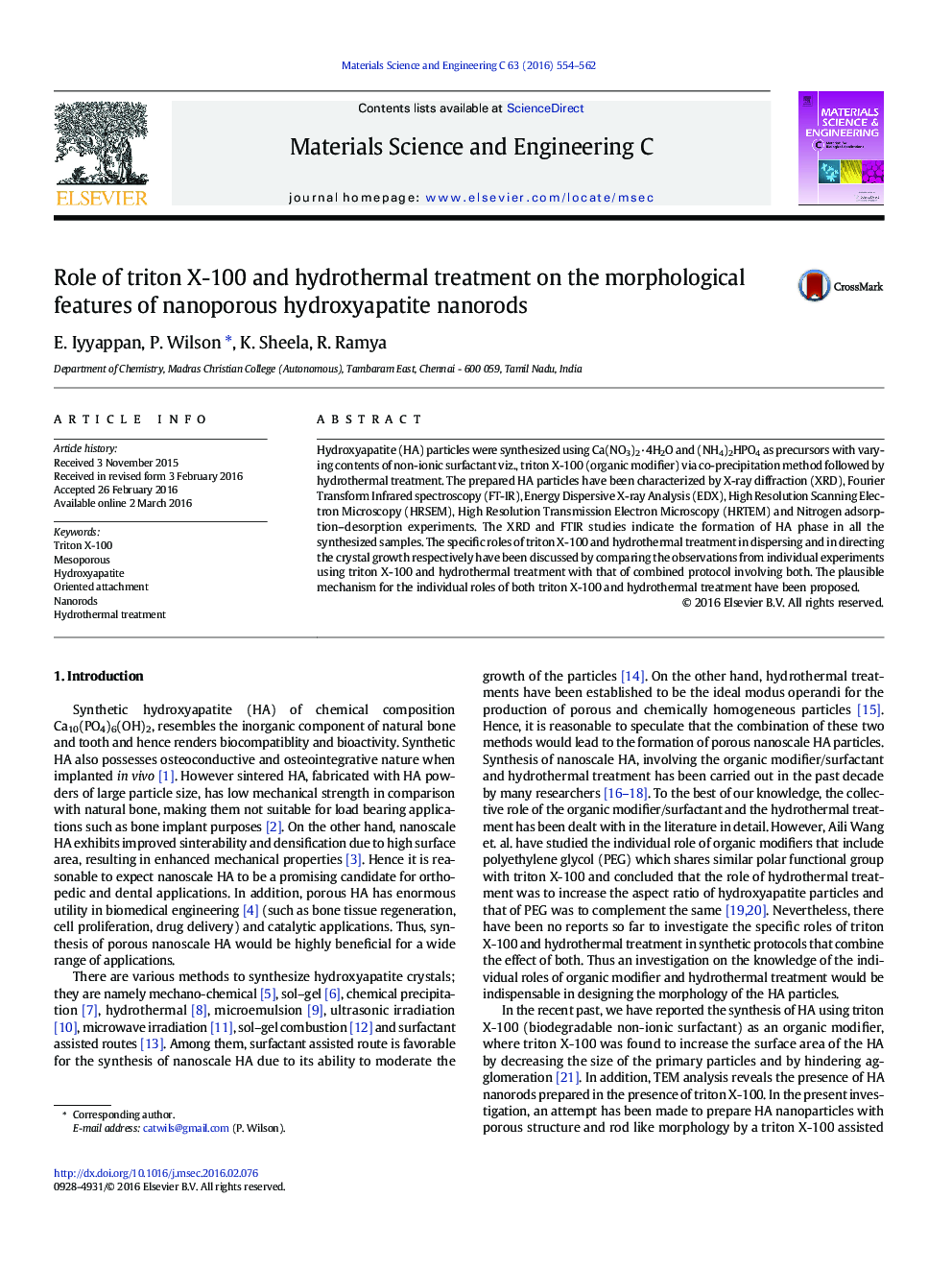| Article ID | Journal | Published Year | Pages | File Type |
|---|---|---|---|---|
| 1428048 | Materials Science and Engineering: C | 2016 | 9 Pages |
•Nanoporous HA nanorods are synthesized via triton X-100 assisted hydrothermal treatment.•Triton X-100 hinder the agglomeration of HA primary particles•Hydrothermal treatment increase the aspect ratio of the HA particles•Oriented attachment of HA particles occurs under hydrothermal treatment facilitated by triton X-100 stabilized HA collides•The percentage of mesopore volume is higher for hydrothermally treated samples
Hydroxyapatite (HA) particles were synthesized using Ca(NO3)2·4H2O and (NH4)2HPO4 as precursors with varying contents of non-ionic surfactant viz., triton X-100 (organic modifier) via co-precipitation method followed by hydrothermal treatment. The prepared HA particles have been characterized by X-ray diffraction (XRD), Fourier Transform Infrared spectroscopy (FT-IR), Energy Dispersive X-ray Analysis (EDX), High Resolution Scanning Electron Microscopy (HRSEM), High Resolution Transmission Electron Microscopy (HRTEM) and Nitrogen adsorption–desorption experiments. The XRD and FTIR studies indicate the formation of HA phase in all the synthesized samples. The specific roles of triton X-100 and hydrothermal treatment in dispersing and in directing the crystal growth respectively have been discussed by comparing the observations from individual experiments using triton X-100 and hydrothermal treatment with that of combined protocol involving both. The plausible mechanism for the individual roles of both triton X-100 and hydrothermal treatment have been proposed.
